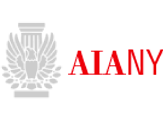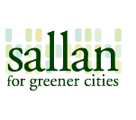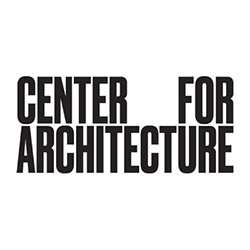New York City High Performance Building Series Third Event of Four
Event Write-up
Architects and Developers Speak Out
On October 19, the third of four High Performance Building panels was held at the New York Chapter of the American Institute of Architects (AIA) Center for Architecture. The panel, Architects and Developers — the Practice and Challenge of Building Green, was sponsored by the Sallan Foundation, the Municipal Art Society, and the New York City Chapter of the AIA Committee on the Environment.
The panel's moderator, Carlton Brown, Chief Operating Officer of the Full Spectrum development group, explained, "That although nobody knew what green buildings were six years ago, everyone here at the panel tonight agrees the tempo needs to be sped up". Bruce Fowle, principal of FXFOWLE Architects, formerly Fox & Fowle Architects, spoke of his firm's pioneering efforts in sustainable architecture, Lydia Tom, Deputy Director of the Enterprise Foundation New York explained her organization's approach of balancing practical green design and affordable housing, and John Krieble, Director of the Office of Sustainable Design in New York City's Department of Design and Construction (DDC) reviewed his agency's mandate to build green. "We are here tonight to try and comprehend what the barriers are in each of these sectors (private architecture design, non-profit development, and public administration), and how we can begin to work with each other", declared Brown.
Fowle began his presentation with a critique on the terminology of green architecture. When he first began the Conde Nast building at 4 Times Square in 1996, the largest green building at that time was 50,000 square feet. 4 Times Square was to be 1.6 million square feet, and once completed in 1999, it would become the catalyst of the green building movement, and a showcase of sustainable high-rise construction. Said Fowle, "Green architecture has many definitions, and the criteria used to evaluate 'greenness' varies tremendously". He explained that labeling a building green is arbitrary, and that the standards associated with green in the United States are different from those in Canada or other parts of the world.
Among the many "green" architecture projects that his firm has designed, each one has brought innovations to the architecture profession. At 4 Times Square, fuel cells and photovoltaic panels were employed for on-site generation of power. Since construction, however, the price of fuel cells has risen with the jump in natural gas prices, and now they are less widely used. Fowle also explained that on large commercial buildings, photovoltaics are more of a symbol than a significant source of renewable energy. FXFOWLE hopes that its daylight dimming system in the New York Times building, which his firm is designing in coordination with Renzo Piano, will transform commercial building design. Along with an acute attention to day lighting and transparency, one of the greatest innovations in this design is the under floor air conditioning. Although some traditional developers dispute the flexibility of raised flooring for smaller tenants, FXFOWLE has employed this technique in its designs because of the environmental benefits and the positive effects the system has in mitigating the workplace "churn" for corporate tenants. At the firm's Helena apartment tower, the first non-mandated green residential high rise in the city, the black water system filters and reuses water, which is then used to irrigate the green roofs and fill the cooling towers. Fowle admits this is a space consuming and expensive gesture, but the building is intended to be a demonstration project and as systems like this are used more, the costs will come down.
When asked by an audience member about working with developers in the design of green architecture, Fowle explained, "Having a grip on the costs associated with innovative green architecture is key. You must have the right answers to why they should build green". He explained that for residential developments his firm stresses the health of residents, whereas for commercial developments, it is important to discuss increased productivity with clients. Brown added to the discussion that to increase the market value of his developments, the more apparent green building techniques, like solar panels, are used and marketed.
Fowle sees signs of a green building groundswell, and added that the more green buildings are built, the more people will have to decide whether to live green. He contended that the more people understand the benefits of green architecture, the more the market will begin to shift. However, Carlton Brown noted that most developers are cautious with green architecture because the new technology involved inherently increases the risk of a project. While Fowle plans to continue working with LEED (Leadership in Energy and Environmental Design), he opined about its inherent danger. "It has become a numbers game where innovation is stymied. You can get around some of the most primary goals, like energy generation, and still attain a LEED rating."
The second panelist, Lydia Tom, identified the interest of the Enterprise Foundation, a non-profit affordable housing developer, in bridging the gap between the world of green buildings and affordable housing. As part of the Foundation's goal of providing all low-income people in the United States with fit and affordable housing, the Green Communities Initiative, a 5-year, $555 million national effort, is working to address the challenges posed by potential up front costs and difficulties with information dissemination in order to construct 8,500 green and affordable homes. Finding the balance between installing costly green features in their buildings and maintaining the affordability of housing, the Foundation focuses primarily on energy conservation and indoor air quality. "We want to affect the most immediate conditions for homeowners, and we believe this is a practical solution", said Tom. While these initiatives do not necessarily create LEED rated buildings, Tom explained that a healthy home with low energy costs means cheaper rent, and that is her non-profits' ultimate goal. Said Tom, "Our program mission dictated what green means to us even though we ideally would like a LEED rating".
The Enterprise Foundation's Green Communities Initiative provides loans, grants, and $500 million in housing tax credit equity to assist in the construction of green affordable units across the nation. Last year in New York this translated into over $27 million in investment that created 500 affordable green housing units. Tom explained that tax credit investors are increasingly interested in her developments because of the growing understanding that the life cycle costs of green buildings will out perform developments of similar size without green features. She believes this interest is the front end of an important investment trend. When an audience member inquired about a centralized information source to explore the innumerable tax incentives, Brown replied that the NYSERDA (New York State Energy Research and Development Authority) website has several links in regards to tax credits. "Identifying the tax credit maze is all about doing the research, learning from experience, and networking".
The final panelist, John Krieble of the New York City DDC, reviewed his challenge of transforming a municipal department with a $500 million budget for building construction into a totally green department. The DDC has roughly 400 projects active for 20 different client agencies at any one time, all of which will be required to meet some level of green design standards. Said Krieble, "Streamlining an initiative like this in a government agency is all about getting the right information to the right place at the right time". Krieble explained that since the city owns buildings for an average of 50 to 100 years, reducing operating costs and the demand on infrastructure is a very worthwhile effort.
While New York City hopes to lead by example, Krieble admits that the best tool is experience, and that the DDC is currently on a learning curve. The dissemination of needed information is a multi-faceted endeavor. While the DDC distributes manuals to help keep information simple and straightforward for its' contractors, the best tool to ensure green design is to put all the requirements into the architect's contract. Now that Intro 324-A has been signed into law, building and renovating to LEED equivalent standards is mandatory, and the DDC will use LEED as a platform to implement this rather onerous task. The myriad guidelines within the LEED action plan are "irreplaceable", explained Krieble. "LEED lays down a common language about green buildings, and it works best because it is constantly evolving with the green building movement."
While each panelist argued the differences in what green is and what it should become, they agree that LEED has been an invaluable asset. The US Green Buildings Council has been able to bring the green buildings movement into the mainstream in only a matter of years, and without government support. However, they all agree there is room for improvement. The consensus among panelists is that LEED is best as an interactive process, and should never become a stifled, stagnant text. Said Krieble, "LEED is like a SAT score. It can only show the direction a project is moving. The whole process should be simplified and although simplicity is important, credibility is what matters most."




